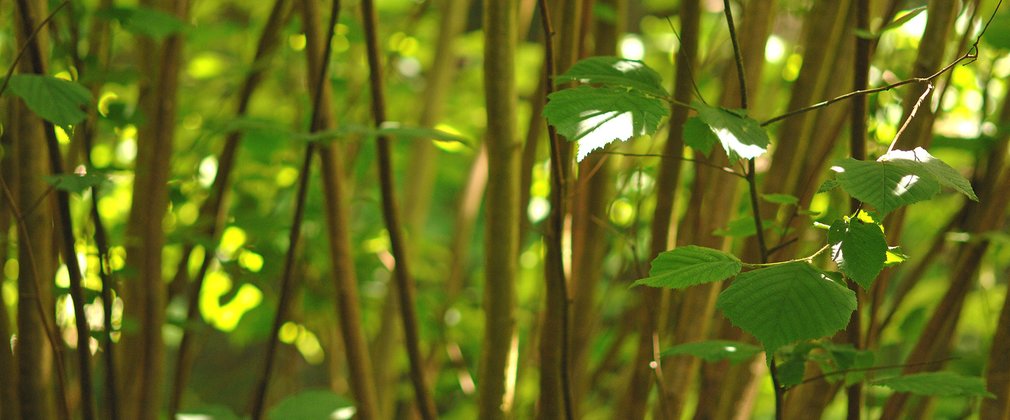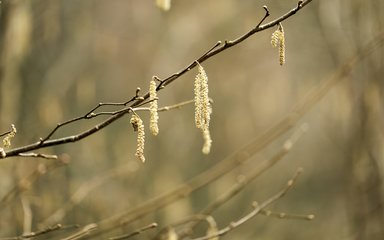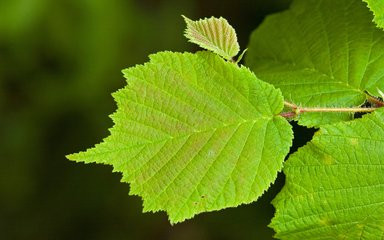
Hazel is the ideal coppice tree. Every few years it can be cut back to a ‘stool’ at ground level so that it produces a cluster of straight, flexible stems that can be harvested. Find out more about this tree species, from its appearance to the uses of its timber.
Hazel facts and figures
- hazel (Corylus avellana) thrives as a shrub and is rarely left to develop into a tree, but if left uncut can grow to ten metres tall and live for up to 80 years.
- coppiced hazel can live for several hundred years.
- male and female flowers develop on the same tree.
- hazel is extremely bendy - in spring you can tie a branch in a knot without breaking it.

Hazel identification tips
Heading out into the forest? Here are the top things to help you spot hazel:
- bark: smooth, shiny brown bark with raised yellow pores and scaly patches.
- nuts: in October, ripe hazelnuts are enclosed in leafy bracts.
- leaves: placed alternatively along their twigs, they open in late April.
- flowers: in late winter male flowers form 'lambstails' catkins, which disperse their pollen through woodland.
How hazel is used
Due to its extreme flexibility, hazel has had many uses through history. In the past when someone needed wood this would have often have been provided by their hazel copse. A portion of the wood was cut each year to give a constant supply of poles for firewood, wattle and daub building, thatching and fences.
Hazel coppice is an important part of traditional woodland management and today a small industry is thriving. Hazel is used for woven baskets, fence 'hurdles' and walking sticks. The thinner sticks are useful as beanpoles and garden plant supports.
The nuts of hazel are also edible, and much loved by small mammals.

Hazel and future forestry
Copping hazel fell out of favour in the second half of the twentieth century, as it is best harvested by hand using billhooks, not machine, and it's traditional uses were replaced by modern building and fencing alternatives.
However, coppicing can bring considerable biodiversity benefits to woodlands, which is important for our future climate. We're re-starting this technique where possible, cutting every seven years on rotation to create a wide variety of habitats.
Once the hazel is cut, an increase in sunlight to the forest floor promotes a burst of flowers, insects and butterflies. Once the hazel has grown it provides valuable homes for wildlife, such as the hazel dormouse and small birds.

